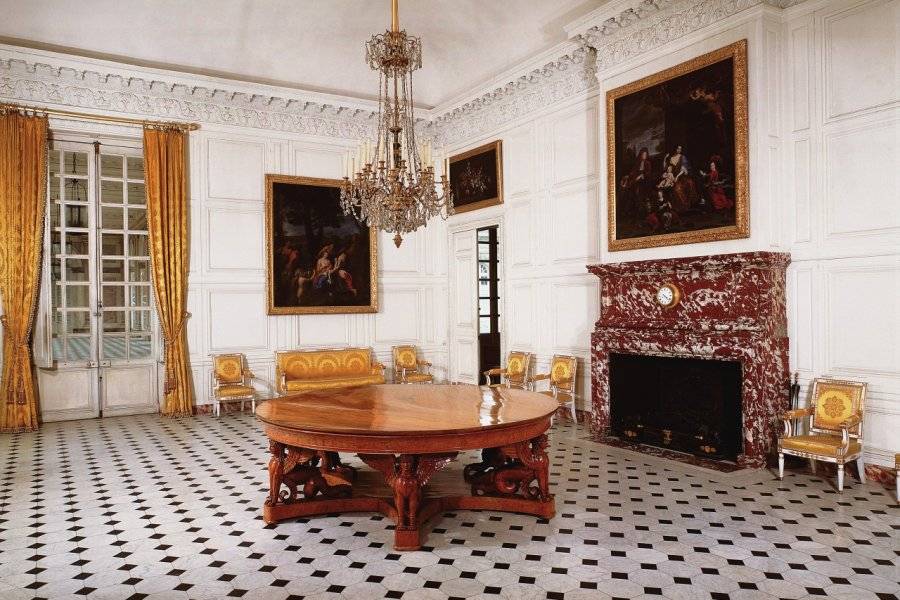Castles, including the first Grand Trianon with a main pavilion and 4 other secondary ones, the small marble palace with gardens
Trianon, originally a village, was bought and then destroyed by Louis XIV, and added to the park of his château: he had a residence built there to accommodate both his family visits and his love affairs with Madame de Montespan. As early as 1670, Louis Le Vau was commissioned to build the first Grand Trianon: he erected a main pavilion and four secondary ones, and clad the walls in blue and white earthenware. In 1687, as this "porcelain Trianon" no longer met the Sun King's taste, Jules Hardouin-Mansart built a "small marble palace" on the same site. In the style of Italian palaces, the refined, open building was built on one floor between a courtyard and formal gardens. Plants were potted, so they could be moved daily to create new beds. A two-storey wing features a series of rooms with finely-executed woodwork depicting the magnificent flowers of the parterres. The apartments were emptied during the French Revolution. Napoleon I and Marie-Louise, who enjoyed residing there, arranged the furnishings, which can still be seen today. The Petit Trianon belongs to Marie-Antoinette's estate, along with the Hameau and gardens. It was built by Gabriel in 1760, at the instigation of Louis XV's favorite, the Marquise de Pompadour, to "soothe the king". In 1776, Louis XVI presented it to the Queen, so that she could enjoy the tranquility of the countryside and a certain degree of freedom.
Did you know? This review was written by our professional authors.
Members' reviews on CHATEAUX DE TRIANON
The ratings and reviews below reflect the subjective opinions of members and not the opinion of The Little Witty.









Les colonnes à la sortie sont très jolies cependant.
En partant, passez par le petit jardin du Roi situé sur un côté du bâtiment. Plutôt petit, ce qui le donne un côté intimiste, il est aussi très joliment fleuri.
The first half of the museum is rooms and furniture displays during the time period and under who's rule.
The second half of the museum is fabric designs, very elaborate looking.
The time to go through the musuem is 1 hour without reading anything, maybe two if you read most things.